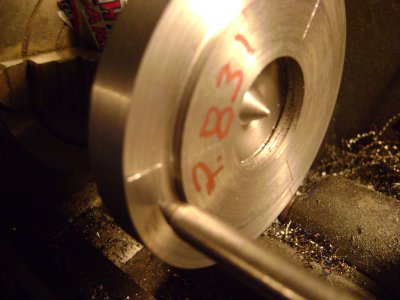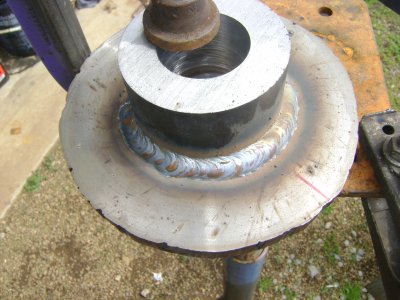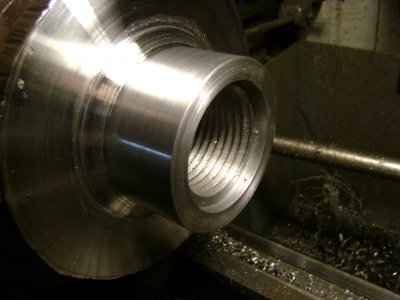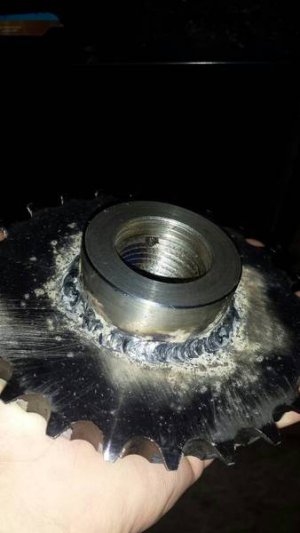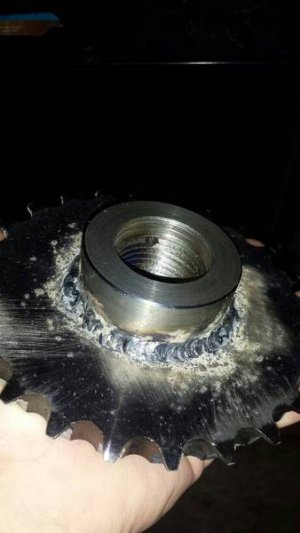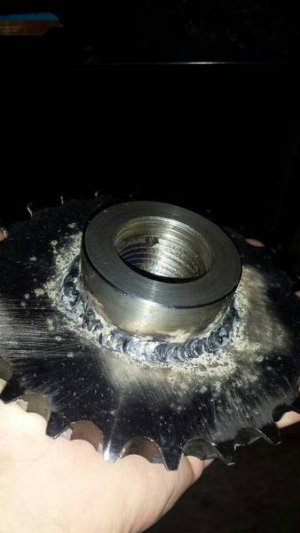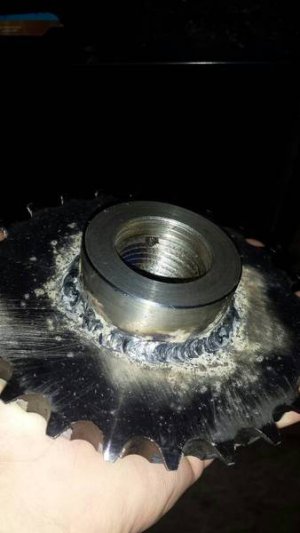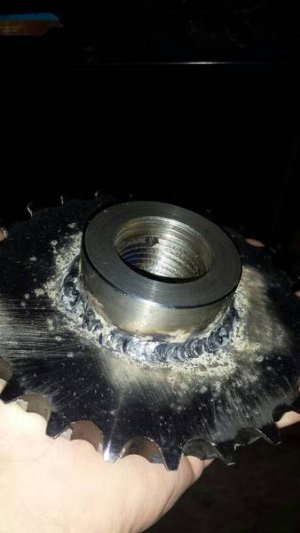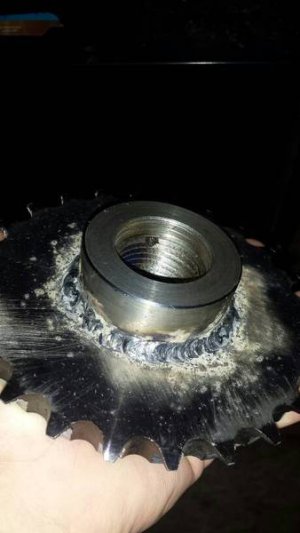- Joined
- Sep 25, 2014
- Messages
- 1,111
As Joshua and others have pointed out, cast iron is a great choice. I recently got a C5 collet chuck, for which I needed a D1-4 mounting plate. I got a semi-finished one from Shars (pretty reasonable, under $60). It cut nicely. The fit on the spindle was good - I did need to work a little bit out of the taper to make the plate sit right down on the flat part of my spindle (per the fitting procedure described on various machining sites). The only annoyance was the 5" blank was 4.945" diameter and the chuck I was mounting was 4.954" - I ended up skimming the OD of the chuck by 0.005" to clean up some shop wear (just a very small step, that only I know about). It all looks good and the runout on a piece of ground dowel is 0.0005" (per the catalog).
I elected to trim the back plate to a snug fit in the register of the chuck (perhaps 0.0005" interferenace - just takes a bump from the hand to break it free). I recognize that there is some debate about whether the fit ought to be snug, or slightly loose, then adjust the chuck position before finally tightening the bolts as a method to work out the last bit of runout (a poor man's SetTrue). I'd be glad to hear folks comments on whether the register out to be snug or adjustable (perhaps it depends on whether it is a good sized 4 jaw used for rough work, or a delicate little work holding device).
Anyway, with my one back plate from Shars, I am happy with the result.
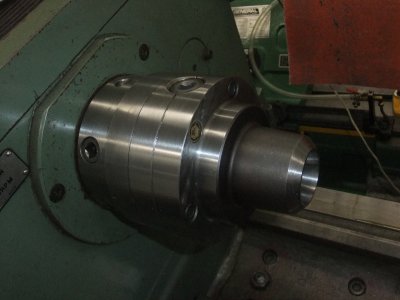
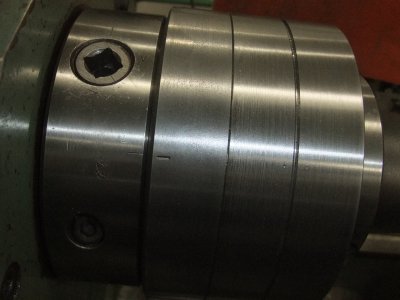
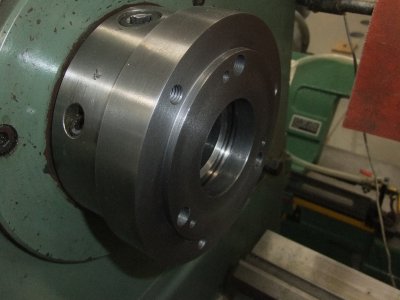
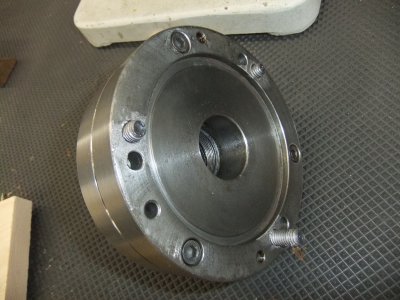
I elected to trim the back plate to a snug fit in the register of the chuck (perhaps 0.0005" interferenace - just takes a bump from the hand to break it free). I recognize that there is some debate about whether the fit ought to be snug, or slightly loose, then adjust the chuck position before finally tightening the bolts as a method to work out the last bit of runout (a poor man's SetTrue). I'd be glad to hear folks comments on whether the register out to be snug or adjustable (perhaps it depends on whether it is a good sized 4 jaw used for rough work, or a delicate little work holding device).
Anyway, with my one back plate from Shars, I am happy with the result.






